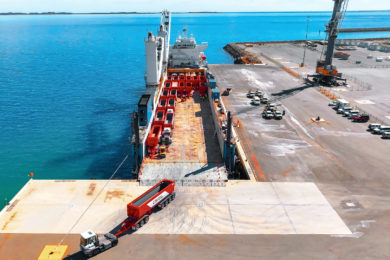James (Jim) Robbins has been instrumental in the history of mining, being ultimately responsible both for the hard rock tunnel boring machine (TBM) and whose company also went on to purchase the rights for the design of a raise boring machine which also became synonymous with the Robbins name. He founded The Robbins Company in 1952, and went on to design and manufacture the world’s first TBM for Mitry Constructors who were working on the Oahe Dam diversion project near Pierre, South Dakota, USA. The major breakthrough in the design of hard rock TBMs occurred in 1956 when disc cutters were first used exclusively to cut rock.
On the first several machines pick cutters and disc cutters were used, but since then only disc cutters have been used to excavate hard rock on tunnels. The Robbins Company was bought by Atlas Copco in 1993 but following a decision to move away from the TBM business, Atlas Copco sold this to Boretec in 1998, which along with others formed the current group back under the original Robbins Company name.
Atlas Copco, however, did retain the raise boring business, which began with the first successful raise boring machine, the Robbins 41R, developed by The Robbins Company in 1962 under Dick Robbins when he set out to mechanise this hazardous task in mining. With pinned drill tubes and steel cutters, the 1.2 m diameter Robbins 41R was launched and many of the early machines are still working. Since design and manufacturing of the raise borers moved to Sweden, 17 models have been developed in a product range that represents a long line of milestones in raiseboring technology. Recent innovations include the energy efficient VF drive and Measure While Drilling (MWD) system. Today’s bestselling raise drill is the Robbins 73RH C which is capable of reaming 1.8-3.1 m diameter holes.
Don’t forget to put your nominations in (to [email protected]) for the 2016 inductions. There are 12 categories:
- Exploration
- Underground development
- Underground Production
- Surface mining
- Comminution
- Concentration
- Mining software
- Safety
- Bulk handling
- Metallurgy
- Environmental management and stewardship
- Outstanding innovator









